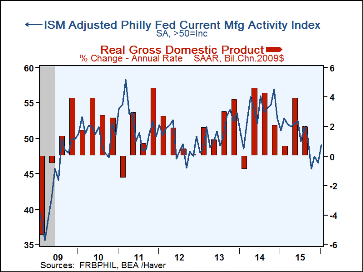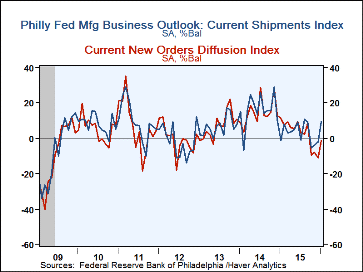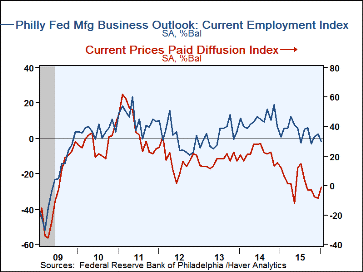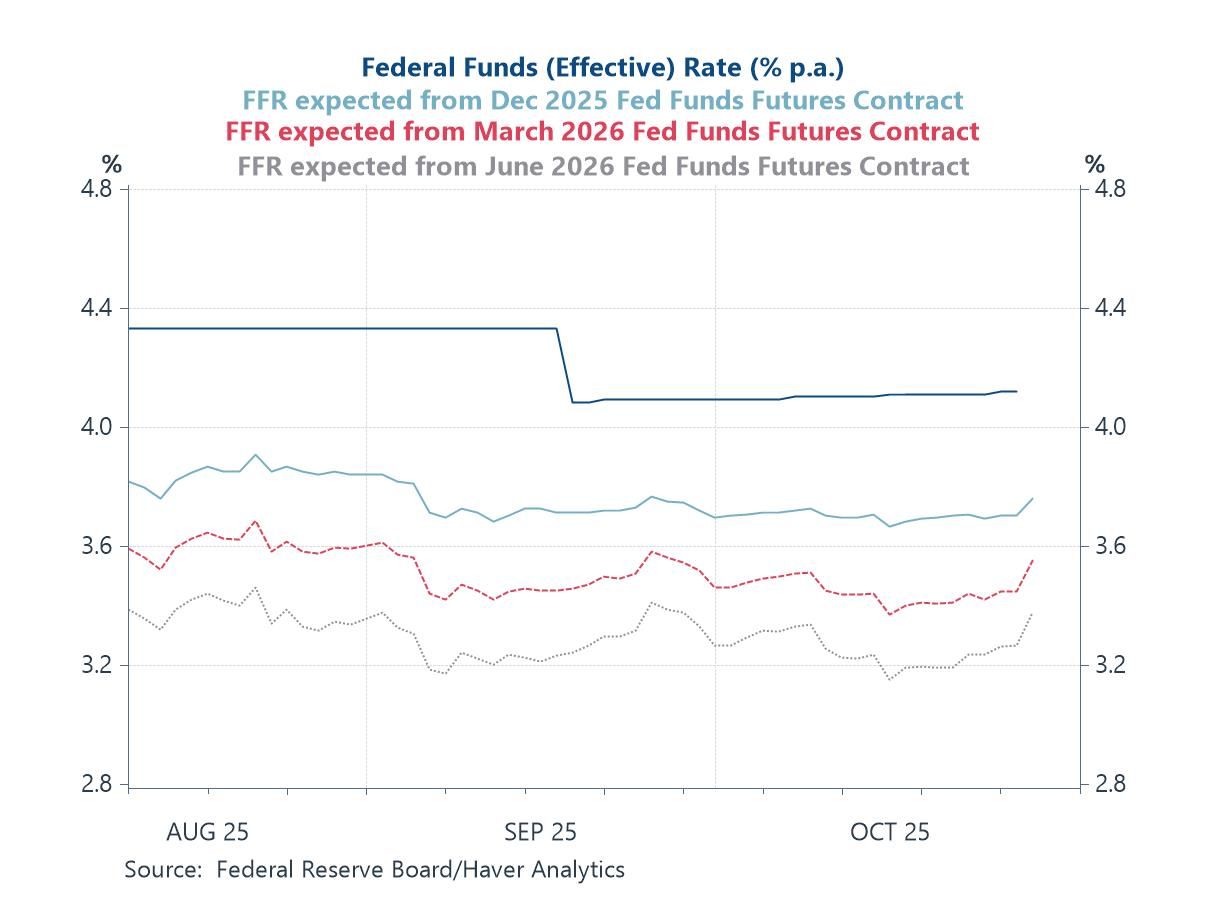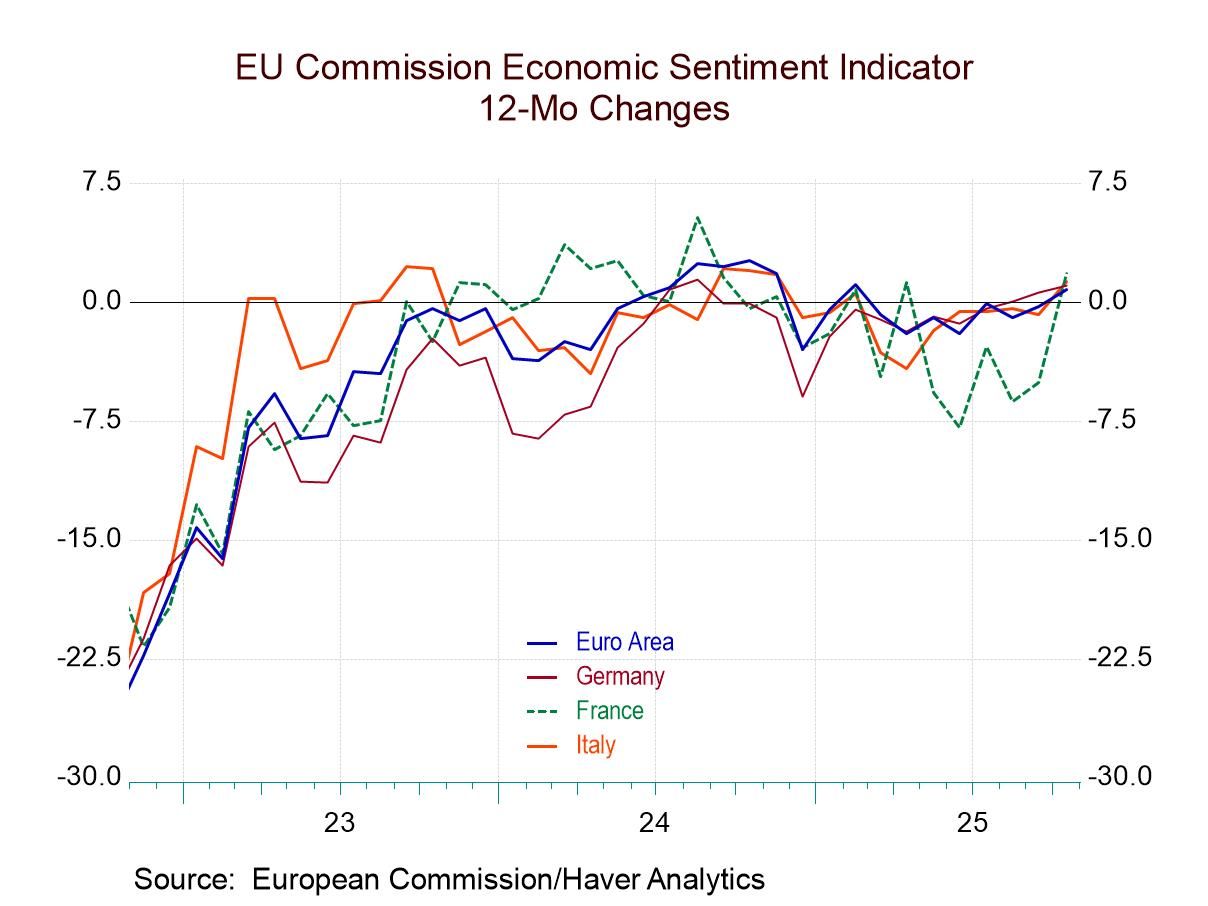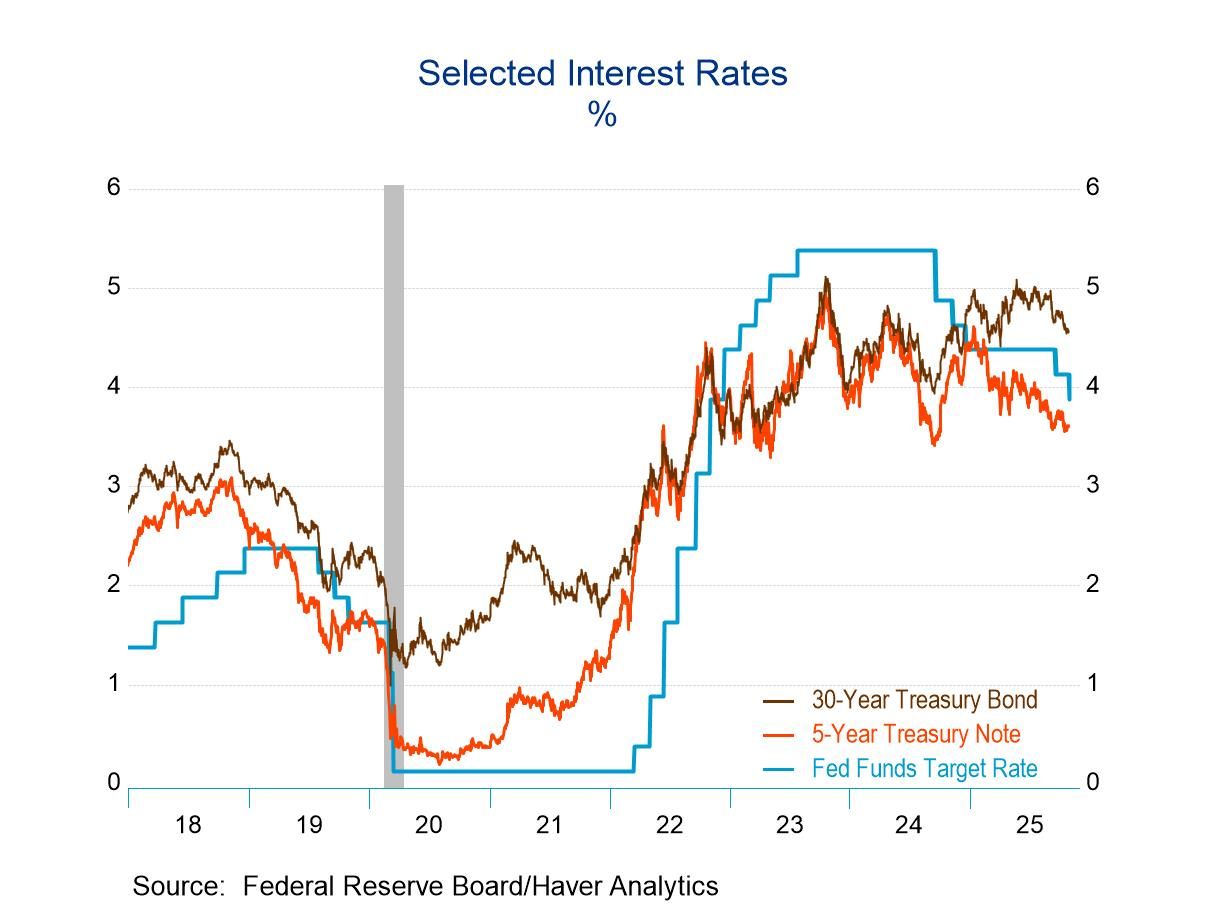 Global| Jan 21 2016
Global| Jan 21 2016Philadelphia Fed Business Conditions Index Remains Negative, but Losses Moderate
by:Tom Moeller
|in:Economy in Brief
Summary
Current readings from the Federal Reserve districts are painting different pictures of factory sector activity. The Philadelphia Federal Reserve reported that its General Factory Sector Business Conditions Index for January improved [...]
Current readings from the Federal Reserve districts are painting different pictures of factory sector activity. The Philadelphia Federal Reserve reported that its General Factory Sector Business Conditions Index for January improved to -3.5 from -10.2 in December, revised from -5.9. Expectations were for -5.5 in the Action Economics Forecast Survey. Improvement in the Philadelphia number contrasts with last week's sharp deterioration in the Empire State Factory Sector Index.
The ISM-adjusted general business conditions index constructed by Haver Analytics improved to 49.1 from 46.5, revised from 48.1. It remained below 50 for the fourth straight month, but also suggested a moderating rate of decline in factory sector activity. It is comparable to the ISM Composite Index. During the last ten years, there has been a 71% correlation between the adjusted Philadelphia Fed Index and real GDP growth.
The components of the overall index were mixed. Shipments jumped and were positive for the first time in four months. New orders and unfilled orders remained negative, but declines have eased. Vendor delivery speeds remained negative, continuing to suggest faster delivery speeds, while the inventory figure suggested a faster rate of decumulation. The employment measure slipped into negative territory, suggesting job loss for the first month in the last three. During the last ten years, there has been an 81% correlation between the jobs index and the m/m change in manufacturing payrolls.
On the pricing front, the prices paid index showed deflation for a fifth consecutive month, but deterioration moderated. Seventeen percent of respondents paid higher prices, while 18% paid less. The prices received measure improved m/m, but remained negative.
The future business activity index deteriorated sharply to its lowest level since November 2012. Expected new orders and shipments fell significantly. Employment also deteriorated, along with capital expenditures and prices paid.
The survey panel consists of 150 manufacturing companies in Federal Reserve District III (consisting of southeastern PA, southern NJ and Delaware.) The diffusion indexes represent the percentage of respondents indicating an increase minus the percentage indicating a decrease in activity. The ISM adjusted figure, calculated by Haver Analytics, is the average of five diffusion indexes, new orders, production, employment, supplier deliveries and inventories with equal weights (20% each). Each diffusion index is the sum of the percent responding "higher" and one-half of the percent responding "same."
The figures from the Philadelphia Federal Reserve can be found in Haver's SURVEYS database. The Action Economics figure is available in AS1REPNA.
| Philadelphia Fed (%, SA) | Jan | Dec | Nov | Jan'15 | 2015 | 2014 | 2013 |
|---|---|---|---|---|---|---|---|
| ISM-Adjusted General Business Conditions | 49.1 | 46.5 | 47.4 | 51.1 | 50.3 | 53.6 | 50.8 |
| General Factory Sector Business Conditions | -3.5 | -10.2 | -5.7 | 14.1 | 3.6 | 18.3 | 6.1 |
| New Orders | -1.4 | -11.1 | -7.8 | 11.1 | 2.9 | 14.9 | 7.2 |
| Shipments | 9.6 | -2.1 | -3.6 | -1.3 | 3.0 | 16.1 | 6.8 |
| Unfilled Orders | -8.8 | -17.6 | -4.3 | -3.4 | -5.1 | 3.3 | -3.9 |
| Delivery Time | -7.6 | -6.1 | -2.9 | -7.7 | -4.1 | 0.6 | -4.1 |
| Inventories | -15.7 | -5.7 | -9.9 | 1.5 | -1.5 | 1.7 | -3.5 |
| Number of Employees | -1.9 | 2.2 | 1.1 | 0.6 | 3.9 | 10.5 | 1.4 |
| Prices Paid | -1.1 | -8.3 | -7.5 | 12.6 | 1.5 | 21.6 | 16.4 |
Tom Moeller
AuthorMore in Author Profile »Prior to joining Haver Analytics in 2000, Mr. Moeller worked as the Economist at Chancellor Capital Management from 1985 to 1999. There, he developed comprehensive economic forecasts and interpreted economic data for equity and fixed income portfolio managers. Also at Chancellor, Mr. Moeller worked as an equity analyst and was responsible for researching and rating companies in the economically sensitive automobile and housing industries for investment in Chancellor’s equity portfolio. Prior to joining Chancellor, Mr. Moeller was an Economist at Citibank from 1979 to 1984. He also analyzed pricing behavior in the metals industry for the Council on Wage and Price Stability in Washington, D.C. In 1999, Mr. Moeller received the award for most accurate forecast from the Forecasters' Club of New York. From 1990 to 1992 he was President of the New York Association for Business Economists. Mr. Moeller earned an M.B.A. in Finance from Fordham University, where he graduated in 1987. He holds a Bachelor of Arts in Economics from George Washington University.



